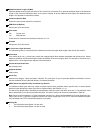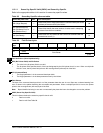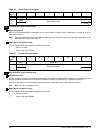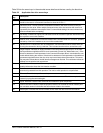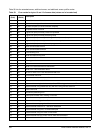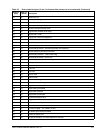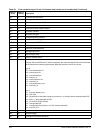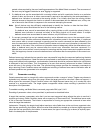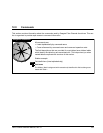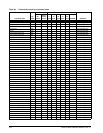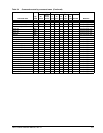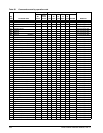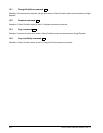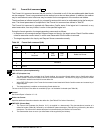
154 Fibre Channel Interface Manual, Rev. D
posted unless required by the error handling parameters of the Mode Select command. The occurrence of
the error may be logged if statistical or error logging is supported.
2. If a deferred error can be associated with a causing initiator and with a particular function or a particular
subset of data, and the error is either unrecovered or required to be reported by the mode parameters, a
deferred error indication is returned to the causing initiator. If an initiator other than the causing initiator
attempts access to the particular function or subset of data associated with the deferred error, a Busy sta-
tus is returned to that initiator in response to the command attempting the access.
Note. Not all devices may be sufficiently sophisticated to identify the function or data that has failed.
Those that cannot should treat the error in the following manner:
If a deferred error cannot be associated with a causing initiator or with a particular subset of data, a
deferred error indication is returned on behalf of the failing logical unit to each initiator. If multiple
deferred errors have accumulated for some initiators, only the last error is returned.
3. If a current command has not yet started executing, and a deferred error occurs, the command is termi-
nated with Check Condition status and deferred error information posted in the sense data. If a deferred
error occurs while a current command is executing and the current command has been affected by the
error, the command is terminated by Check Condition status and current error information is returned in the
sense data. In this case, if the current error information does not adequately define the deferred error con-
dition, a deferred error may be returned after the current error information has been recovered. If a
deferred error occurs while a current command is executing and the current command completes success-
fully, the target may choose to return the deferred error information after the completion of the current com-
mand.
Deferred errors may indicate that an operation was unsuccessful long after the command performing the data
transfer returned Good status. If data that cannot be replicated or recovered from other sources is being stored
using such buffered write operations, synchronization commands should be performed before the critical data
is destroyed in the host initiator. This is necessary to be sure that recovery actions can be taken if deferred
errors do occur in the storing of the data. The synchronizing process provides the necessary commands to
allow returning Check Condition status and subsequent returning of deferred error sense information after all
buffered operations are guaranteed to be complete.
11.6 Parameter rounding
Certain parameters sent to a target with various commands contain a range of values. Targets may choose to
implement only selected values from this range. When the target receives a value that it does not support, it
either rejects the command (Check Condition status with Illegal Request sense key) or it rounds the value
received to a supported value. The target rejects unsupported values unless rounding is permitted in the
description of the parameter.
To enabled rounding, set Mode Select command, page code 00h, byte 2, bit 2.
Rounding of parameter values, when permitted, is performed as described below.
A target that receives a parameter value that is not an exact supported value adjusts the value to one that it
supports and returns Check Condition status with a sense key of Recovered Error. The additional sense code
is set to Rounded Parameter. The initiator is responsible for issuing an appropriate command to learn what
value the target has selected.
Implementor: Generally, the target should adjust maximum-value fields down to the next lower supported value
than the one specified by the initiator. Minimum value fields should be rounded up to the next higher supported
value that the one specified by the initiator. In some cases, the type of rounding (up or down) is explicitly spec-
ified in the description of the parameter.



